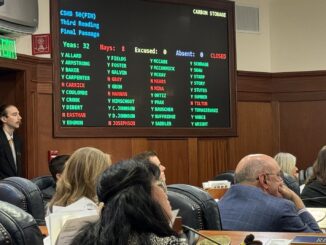
Data values: Primary energy, electricity, and total energy expenditure estimates
Alaska has the highest per capita energy expenditures of any state at $12,100, according to our recently published State Energy Data System information for 2023. Wyoming and North Dakota spent the next most on energy at $10,100 and $9,300 per capita, respectively. All three states spent twice as much as the national average of $4,700. Florida had the lowest per capita energy expenditures at $3,700, followed by New York and Maryland at $3,800 each.
Are you from California, New Jersey or New York and need a tax break?
Differences in economy-wide per capita energy expenditures across states are attributable to weather conditions, economic composition, industrial energy consumption, and other factors. Alaska, Wyoming, and North Dakota have cold winters that require more energy for heating, and their state economies have more energy-intensive industrial sectors such as mining and oil and natural gas extraction.
Florida has warm weather and uses less energy for heating. Although the weather in New York is generally cold, the state has more widespread public transit use than most states and therefore lower expenditures for transportation fuels. New York and Florida have less energy-intensive industries. Maryland has a mild winter climate and ranked among the states with the lowest industrial sector energy expenditures.
Alaska’s population spent the most on jet fuel per capita of any state: the average American spent about $130 on jet fuel in 2023, but the average Alaskan spent nearly $3,700. Living in Alaska or other sparsely populated states such as Wyoming and North Dakota involves more transportation, which contributes to more motor gasoline and distillate fuel oil consumption per capita.
The industrial sector also makes up a larger share of energy expenditures in these states relative to the U.S. average. For example, Wyoming’s industrial sector accounted for 30% of Wyoming’s total energy expenditures versus the U.S. average industrial share of 15%. In New York and Florida, the industrial sector made up 5% and 6% of the states’ total energy expenditures, respectively.
Our energy expenditures data represent the total amount of money spent in the United States by end users of petroleum products, electricity, natural gas, and other fuels in the residential, commercial, industrial, and transportation sectors. We calculate expenditures as energy consumption multiplied by the average price paid by end users for those fuels.
When calculating electricity expenditures, we remove the expenditures for primary energy sources that the electric power sector uses to generate electricity, such as natural gas and coal, to avoid double counting the expenditures of the electricity and its generation sources.
Data values: Total energy prices and expenditures adjusted for inflation by GDP deflator
Nationwide, average energy expenditures decreased in the United States in 2023 but remained higher than long-term averages. Energy expenditures in 2023 were 12% less than in 2022, largely because of lower energy prices, especially lower petroleum prices. The nearly $1.6 trillion spent on energy in the United States in 2023 was slightly above the long-term average of $1.5 trillion, based on inflation-adjusted values since 2000. When expressed as a percentage of gross domestic product (GDP), energy expenditures in 2023 were 5.7% of GDP, or slightly less than the long-term average of 7.0%.
Principal contributor: Brett Marohl
Avoid Paying Taxes in 2025
Crude Oil, LNG, Jet Fuel price quote
ENB Top News
ENB
Energy Dashboard
ENB Podcast
ENB Substack







